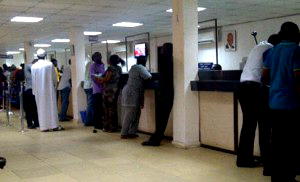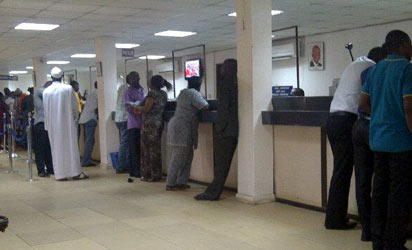

By Babajide Komolafe, Economy Editor
Interbank (bank-to-bank) lending transactions in the money market declined to N25.4 trillion in the first half of the year, H1’22, about 2.5 percent Year-on-Year, YoY, from N26.1 trillion in the corresponding period of 2021, H’21.
This is contained in the just released Central Bank of Nigeria, CBN, Financial Market Half Year Activity report.
Banks borrow money from each other through the interbank money market to meet short term liquidity needs. Most of the borrowings in the market comprise Open Buy Back, OBB, or collateralized lending where a bank uses its assets in financial instruments, mostly treasury bills, as collateral to borrow from another bank.
They also use ‘Call’ or ‘Unsecured’ lending where a bank does not provide any form of collateral to borrow from another bank.
In its review of the Interbank Funds market for H1’22, the CBN stated: “The total value of transactions at the inter-bank funds market stood at N25.4 trillion in the first half of 2022, representing a decrease of N667.81 billion and 2.63 per cent from N26.076 trillion billion, compared with the corresponding period of 2021.
“Analysis of the transactions indicated that open-buy-back (OBB) stood at N25,257.84 billion, accounting for 99.41 per cent, while the unsecured inter-bank call took up 0.59 per cent or N150.52 billion.
‘‘In the corresponding period of 2021, OBB accounted for N25,861.77 billion or 99.18 per cent, while the unsecured segment recorded N214.40 billion or 0.82 per cent (Table 2.8).
“The sustained recourse to the OBB segment in the review period was attributable to risk aversion by counterparties, as there was low appetite for unsecured lending in the market.”
Interest rates
On interbank interest rates during the period, the CBN, stated: “The weighted monthly average inter-bank call rates ranged between 4.50 per cent and 14.31 per cent, while the average OBB rate ranged between 6.10 per cent and 10.89 per cent in the review period.
“On a monthly basis, the highest weighted average rates at the call and OBB segments were 14.31 per cent and 10.89 per cent in January and June, respectively.’’
‘‘Conversely, the lowest rates of 4.50 per cent and 6.10 per cent for the call and OBB segments were in January and February, respectively.
“The highest rate at the inter-bank call and the OBB segments were attributed to the effects of debits for cash reserve requirement and foreign exchange transactions.
‘‘On the other hand, the lowest rates at the two segments were influenced by liquidity injections and the interplay of interbank transactions.”
The post <strong>Interbank lending drops 2.55% to N25.4trn </strong> appeared first on Vanguard News.





